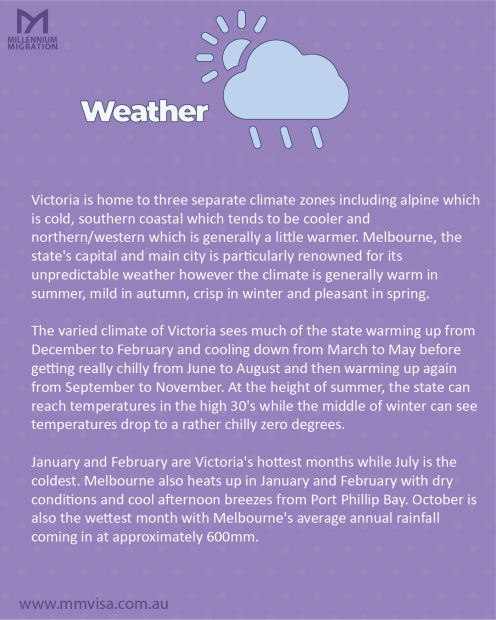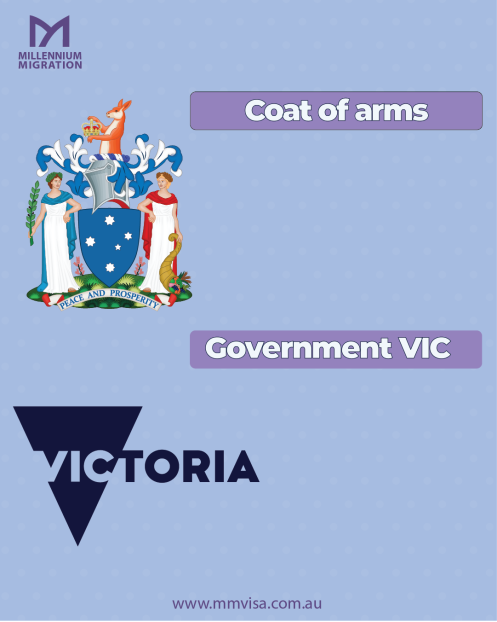
Victoria (abbreviated as VIC) is, the state of southeastern Australia, occupying a mountainous coastal region of the continent. Victoria is separated from New South Wales to the north by the Murray River for a length of about 1,065 miles (1,715 km) and by an additional boundary of some 110 miles (180 km) linking Cape Howe and the nearest source of the Murray. The western boundary is with South Australia, and the southern coastline on the Tasman Sea and the Indian (Southern) Ocean stretches for about 1,045 miles (1,680 km) and includes the shoreline of Port Phillip Bay. Melbourne, the state capital, is at the head of the bay off Bass Strait.
State of Victoria, Australia
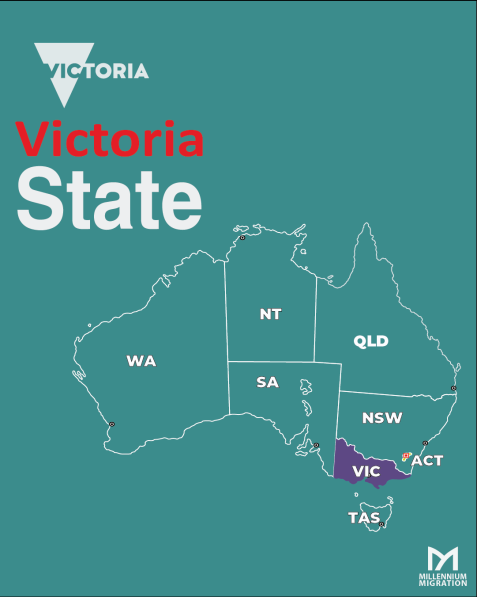
Area of Victora, Australia: It is the second-smallest state with a land area of 227,444 km2 (87,817 sq mi), the second most populated state (after New South Wales)
Overall View Victoria, Australia
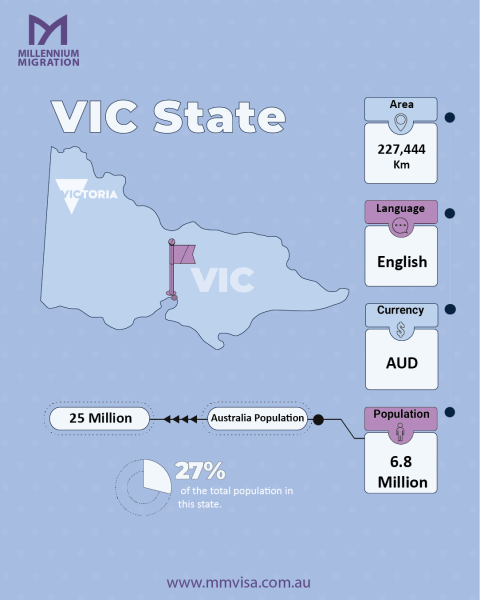
Language of Victoria: The official language of this state is English but, according to the As of the 2016 census, 72.2% of Victorians speak English at home. Speakers of other languages include Mandarin (3.2%), Italian (1.9%), Greek (1.9%), Vietnamese (1.7%), and Arabic (1.3%).
currency of Victoria: The current currency of this state is the Australian dollar, abbreviated as AUD
Population of Victoria: this state has about 5 million people, which is 27% of the population density in this state compared to the total population of Australia (25 million).
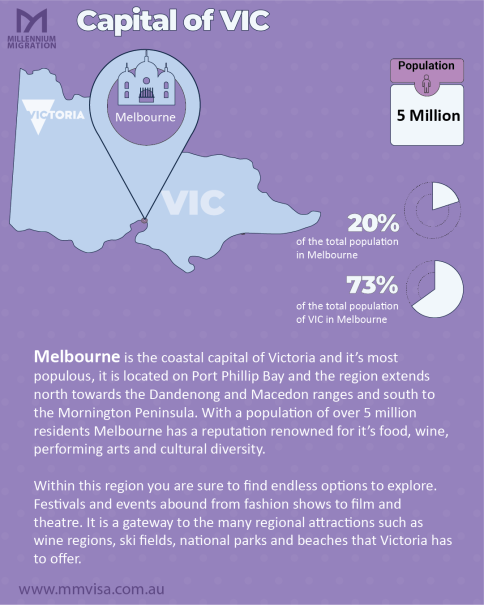
Melbourne is the coastal capital of Victoria and it’s most populous, it is located on Port Phillip Bay and the region extends north towards the Dandenong and Macedon ranges and south to the Mornington Peninsula. With a population of over 5 million residents, Melbourne has a reputation renowned for it’s food, wine, performing arts, and cultural diversity.
Within this region, you are sure to find endless options to explore. Festivals and events abound from fashion shows to film and theatre. It is a gateway to the many regional attractions such as wine regions, ski fields, national parks and beaches that Victoria has to offer.
The capital of Victoria, Australia
Regional Victoria (also known as country Victoria) encompasses all the areas of the state of Victoria outside Melbourne. Regional Victoria contains much of Australia’s geographical and biological diversity.
Journey through our pristine forests; witness the dramatic scenery of our mountain ranges; taste the exotic flavours of our gourmet produce; walk along our many hiking trails; enjoy our many rivers and lakes; visit our many towns and attractions. There is so much to see and experience in regional Victoria
Regional of Victoria, Australia
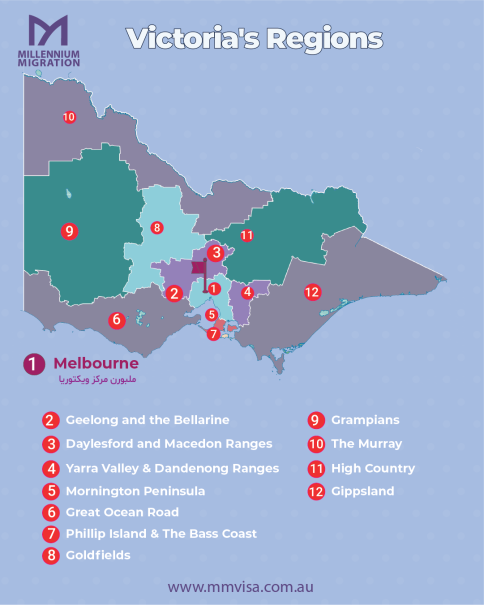
Victoria's weather and climate are renowned for being as diverse as the state itself. The state's varied climate ranges from hot and semi-arid in the northwest to cooler, temperate weather along the coast. The Great Dividing Range, the main land feature of Victoria, also produces a cooler climate in the mountains at the center of the state.
As the southernmost state of Australia's mainland, Victoria's weather is often wetter and cooler than Australia's other mainland territories and states. Located in the southern hemisphere, Australia's seasons are opposite to those of the northern hemisphere meaning Victoria enjoys summer from December to February, autumn from March to May, winter from June to August, and spring from September to November.
Victoria is home to three separate climate zones including alpine which is cold, southern coastal which tends to be cooler, and northern/western which is generally a little warmer. Melbourne, the state's capital and main city is particularly renowned for its unpredictable weather however the climate is generally warm in summer, mild in autumn, crisp in winter, and pleasant in spring.
The varied climate of Victoria sees much of the state warming up from December to February and cooling down from March to May before getting really chilly from June to August and then warming up again from September to November. At the height of summer, the state can reach temperatures in the high 30's while the middle of winter can see temperatures drop to a rather chilly zero degrees.
January and February are Victoria's hottest months while July is the coldest. Melbourne also heats up in January and February with dry conditions and cool afternoon breezes from Port Phillip Bay. October is also the wettest month with Melbourne's average annual rainfall coming in at approximately 600mm.
The Weather of Victoria, Australia
